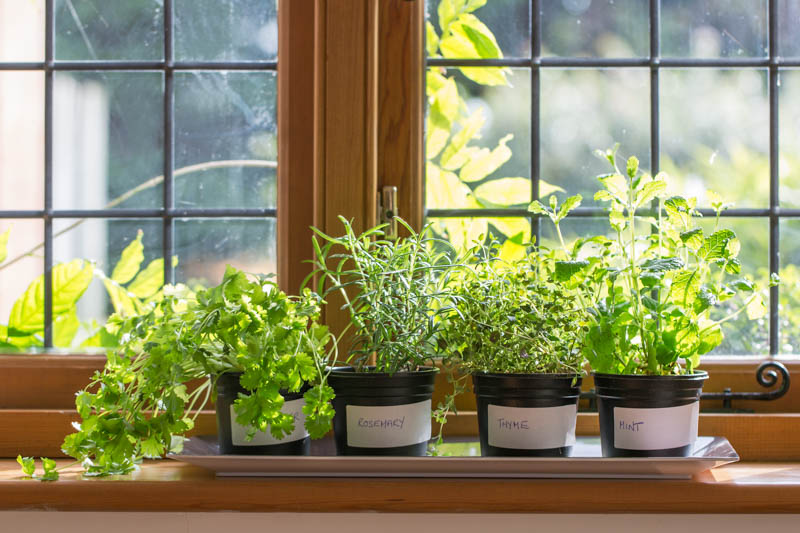Introduction
Keeping an herb garden is a rewarding way to enhance your cooking, boost your health, and bring fresh greenery indoors or outdoors. Whether you have a spacious backyard or a small balcony, cultivating herbs is accessible and enjoyable. However, maintaining a thriving herb garden requires knowledge, care, and the right techniques to ensure your plants stay healthy and productive.
In this article, we’ll explore expert tips and proven strategies to keep your herb garden flourishing. From choosing the right herbs and soil to watering, sunlight needs, and pest management, you’ll gain a comprehensive understanding of how to nurture your herb garden effectively. This guide is designed to help beginners and experienced gardeners alike achieve success with their herb-growing journey.
Choosing the Right Herbs for Your Garden
Which Herbs Are Easiest to Grow?
Starting with the right herbs can make all the difference. Some herbs are more forgiving and thrive in various conditions:
- Basil: Prefers warm weather and plenty of sunlight.
- Mint: Extremely hardy and can grow in partial shade.
- Rosemary: Tolerant of dry soil and heat.
- Thyme: Needs well-drained soil and full sun.
Consider Your Climate and Space
Herbs have different climate requirements. For instance, Mediterranean herbs like rosemary and oregano do well in warm, dry climates, while parsley and chives prefer cooler, moist environments. Also, consider whether you want an indoor or outdoor garden, as this impacts the herb selection and care.
Preparing Soil and Planting Your Herbs
Soil Type and Preparation
Herbs generally prefer well-draining soil rich in organic matter. You can improve your soil by:
- Mixing in compost or aged manure to boost nutrients.
- Adding sand or perlite to improve drainage.
- Testing soil pH; most herbs thrive in slightly acidic to neutral pH (6.0-7.0).
Planting Tips
- Space herbs according to their mature size to prevent overcrowding.
- Plant seedlings or seeds at the recommended depth.
- Use containers with drainage holes if planting indoors to avoid waterlogging.
Watering and Sunlight Requirements
How Much Water Do Herbs Need?
Overwatering is a common mistake. Most herbs prefer soil that dries out slightly between waterings:
- Water deeply but infrequently to encourage strong root growth.
- Check soil moisture by touching; water when the top inch feels dry.
- Adjust watering frequency based on season and weather.
Sunlight Needs
Most herbs require 6 to 8 hours of direct sunlight daily. If growing indoors, place plants near a south-facing window or use grow lights. Some herbs, like mint and parsley, tolerate partial shade, but optimal sunlight promotes healthier growth and stronger flavors.
Managing Pests and Diseases Naturally
Common Herb Garden Pests
- Aphids
- Spider mites
- Whiteflies
- Fungal diseases like powdery mildew
Natural Pest Control Methods
- Encourage beneficial insects like ladybugs and lacewings.
- Use neem oil or insecticidal soap sprays.
- Remove affected leaves promptly.
- Ensure good air circulation to reduce fungal risks.
Pruning, Harvesting, and Maintaining Your Herb Garden
Pruning for Growth
Regular pruning encourages bushier growth and prevents herbs from becoming leggy. Pinch off the tips or trim the stems just above a leaf node.
Best Practices for Harvesting
- Harvest herbs in the morning when oils are most concentrated.
- Avoid removing more than one-third of the plant at a time.
- Use sharp scissors or pruning shears to prevent damage.
Seasonal Maintenance
- Mulch around outdoor herbs to retain moisture and regulate temperature.
- Bring tender herbs indoors before the first frost.
- Repot container herbs every 1-2 years to refresh soil and prevent root binding.
Conclusion
Keeping an herb garden thriving year-round is achievable with thoughtful planning, proper care, and attentive maintenance. By choosing suitable herbs, preparing nutrient-rich soil, managing water and sunlight, and controlling pests naturally, you set your garden up for success. Remember to prune regularly and harvest wisely to encourage continual growth.
Whether you’re a novice or seasoned gardener, these expert-backed strategies empower you to enjoy fresh, aromatic herbs at your fingertips. Start today and experience the joy and benefits of a healthy herb garden in your home or garden space.
